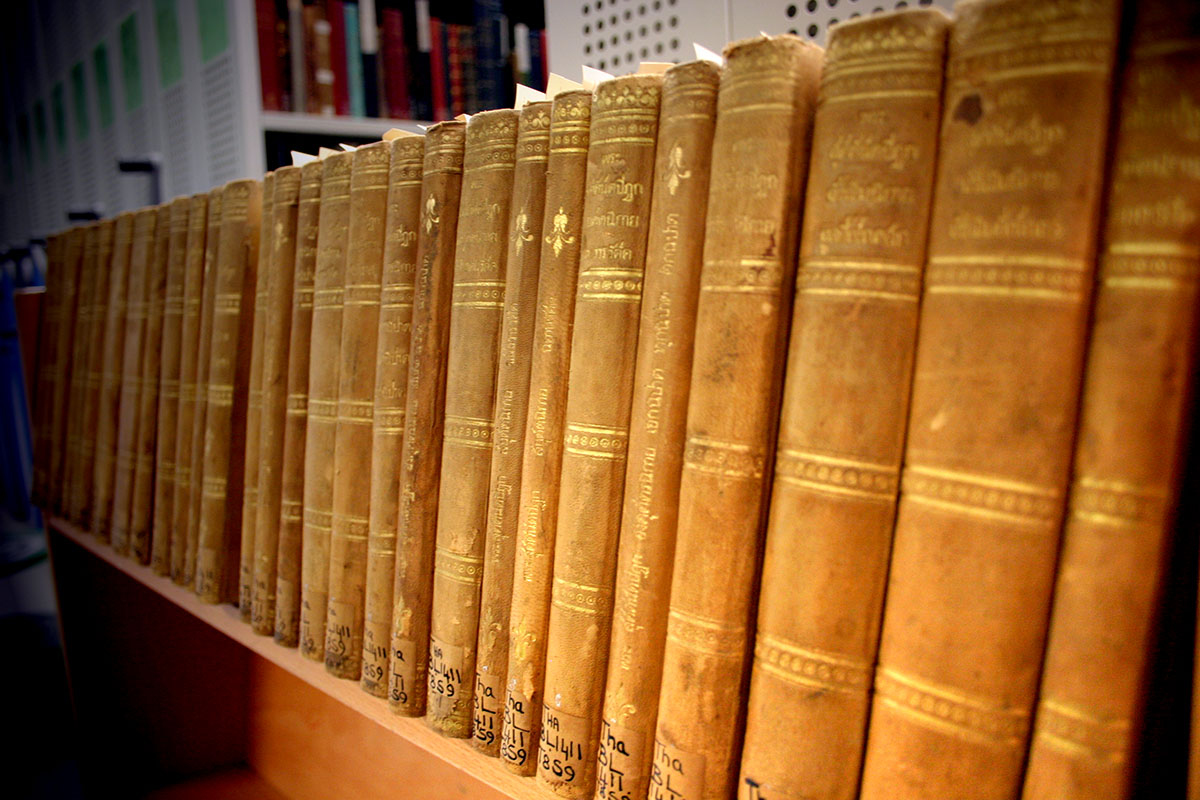
Image credit: standrewsrarebooks.wordpress.com
The Tipitaka
(Pali ti, “three,” + pitaka, “baskets”), or Pali canon, is the collection of primary Pali language texts which form the doctrinal foundation of Theravada Buddhism. The Tipitaka and the paracanonical Pali texts (commentaries, chronicles, etc.) together constitute the complete body of classical Theravada texts.
The Pali canon is a vast body of literature: in English translation the texts add up to thousands of printed pages. Most (but not all) of the Canon has already been published in English over the years. Although only a small fraction of these texts are available on this website, this collection can be a good place to start.
The three divisions of the Tipitaka are:
Vinaya Pitaka
The collection of texts concerning the rules of conduct governing the daily affairs within the Sangha — the community of bhikkhus (ordained monks) and bhikkhunis (ordained nuns). Far more than merely a list of rules, the Vinaya Pitaka also includes the stories behind the origin of each rule, providing a detailed account of the Buddha’s solution to the question of how to maintain communal harmony within a large and diverse spiritual community.
Sutta Pitaka
The collection of suttas, or discourses, attributed to the Buddha and a few of his closest disciples, containing all the central teachings of Theravada Buddhism. (More than one thousand sutta translations are available on this website.) The suttas are divided among five nikayas (collections):
Digha Nikaya — the “long collection”
Majjhima Nikaya — the “middle-length collection”
Samyutta Nikaya — the “grouped collection”
Anguttara Nikaya — the “further-factored collection”
Khuddaka Nikaya — the “collection of little texts”:
Khuddakapatha
Dhammapada
Udana
Itivuttaka
Sutta Nipata
Vimanavatthu
Petavatthu
Theragatha
Therigatha
Jataka
Niddesa
Patisambhidamagga
Apadana
Buddhavamsa
Cariyapitaka
Nettippakarana (included only in the Burmese edition of the Tipitaka)
Petakopadesa (included only in the Burmese edition of the Tipitaka)
Milindapañha (included only in the Burmese edition of the Tipitaka)
Abhidhamma Pitaka
The collection of texts in which the underlying doctrinal principles presented in the Sutta Pitaka are reworked and reorganized into a systematic framework that can be applied to an investigation into the nature of mind and matter.
Source: http://www.accesstoinsight.org/tipitaka/


